#multiplatform development
Explore tagged Tumblr posts
Note
How do pro consoles affect what happens to developing games if any, considering you have to make a game that also has to work on the less powerful console.
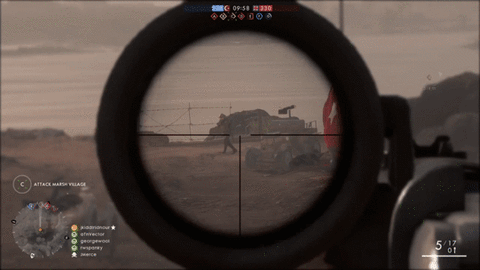
We typically have a "target" platform that we're primarily aiming at. That's what gets the majority of the work, that's what we build our stuff on. That might be the PS5, the PC, or whatever. Our target platform is typically the platform we believe will make up the largest percentage of our player base. We make all of our stuff work on that platform first and foremost. Then, we have our artists and engineers do extras and optimization (depending on the budget) for the other platforms. Most of the time that means paring things down for weaker platforms like the Switch or min-spec PCs, but it also means adding in the extra visual bells and whistles for the enthusiast PC with beefier specs and/or the Pro version of game consoles. The general priorities are, in order:
Make it work
Make it fast
Make it pretty
You can probably guess where work for the "pro" consoles fall in the priority list.
[Join us on Discord] and/or [Support us on Patreon]
Got a burning question you want answered?
Short questions: Ask a Game Dev on Twitter
Long questions: Ask a Game Dev on Tumblr
Frequent Questions: The FAQ
24 notes
·
View notes
Text
How Multiplatform Development is Shaping the Mobile App Industry
One codebase, endless possibilities—Multiplatform Development is changing how the Mobile App Industry scales and succeeds.
#Multiplatform Development#Mobile App Industry#custom ios app development#custom application development services#android application development company
0 notes
Text
🌌 Attention, Pandora explorers! 🐉 Update 1.11 for Avatar: Frontiers of Pandora will launch on October 29th! This update includes must-know fixes for better gameplay, such as improved access to story packs and resolved quest issues!
#Avatar Frontiers Of Pandora#Update 111#Gamers News#Game Patch Notes#Essential Fixes#Video Game Updates#PC Gaming#PS5 Games#Xbox Series X#Sky Breaker#Gaming Community#Gamer Experience#Game Stability#Quest Completing#Cosmetic Rewards#Custom Key Bindings#Game Navigation#Gameplay Enhancements#Pandora Adventure#Ubisoft#Multiplatform Gaming#Game Issues#Fixes And Updates#Game Improvements#Player Experience#Game Design#Game Development#Video Game News#Gaming Updates
2 notes
·
View notes
Text
#mobile app development company#app development service#ios app development companies#android app development service#android app development company#ios apps development#cross platform application development#hybrid mobile app development#multiplatform mobile app development
2 notes
·
View notes
Text
Unlock Success with Hybrid Mobile Application Development Services

Is your business ready for mobile transformation? Our hybrid mobile application development services enable you to build high-performance apps that run seamlessly across multiple platforms. With our specialized cross platform app development services, we ensure consistent user experiences on both Android and iOS. Our multiplatform mobile app development expertise provides a unified solution that helps your app reach more users while keeping development costs in check.
#hybrid mobile application development services#cross platform app development services#multiplatform mobile app development
0 notes
Text
#Custom Android App Development#Wearable App Development#Smart TV App Development#Custom Multiplatform App Development#On-Demand Cross-Platform applications
1 note
·
View note
Text




In honor of Disney Television Animation's 40th Anniversary, the studio did an art gallery by artists from the multiple crews from the studio.
Wander Over Yonder Artwork by the talented Israel Sanchez (Disney Television Animation Multiplatform")
"Star Vs. The Forces Of Evil" by the talented Kassandra Heller ("Big City Greens" franchise)
40th Anniversary Logos by Suzanna Olson ("Gravity Falls", "DuckTales (2017)", Disney TVA "Development")
"40 Years of Disney Television Animation" by Emily Carson ("Rapunzel's Tangled Adventure", Disney TVA Development)
#Disney Television Animation#Disney TVA#Disney TV Animation#DTVA#Wander Over Yonder#WOY#Star Vs The Forces Of Evil#Star Vs. The Forces Of Evil#Primos#Disney Primos#Big City Greens#Fish Hooks#Hailey's On It#Rapunzel's Tangled Adventure#Tangled The Series#Big Hero 6#Big Hero 6 The Series#Darkwing Duck#Amphibia#The Owl House#The Ghost and Molly McGee#Moon Girl and Devil Dinosaur#Kiff#Disney Kiff#Gravity Falls#Pickle And Peanut#Recess#Phineas and Ferb#Hamster and Gretel#Milo Murphy's Law
425 notes
·
View notes
Note
Man, that's crazy and unfortunate what happened to that level designer on Sonic Heroes. Is there a source for those stories you could share?
Unfortunately it came from a Game Informer interview on their website back in 2016. Thanks to the efforts of Gamestop, everything about Game Informer was basically wiped from the internet about a little over a week ago.
Digging around a bit I found this Wayback Machine post for the article, titled "Where Sonic Went Wrong", written by Brian Shea.
Iizuka recalls the development cycle of Sonic Heroes, the first multiplatform mainline Sonic console game, as the most stressful of his career, in part thanks to deadlines. He was based in the United States while the rest of the development team was in Japan, and mismanagement took its toll on the team. "The level design for Sonic Heroes was made by two people: me and one other person," he says. "As we got to the later stages of development, this other person got pretty sick and didn't show up to work, so level design was made by one person! So for those very last stages of the game, I didn't sleep at all and I was constantly working. I lost about [22 pounds] because I was just cranking away and it was just work, work, work. I didn't sleep because I had to finish the game on my own. Almost dying!"
From what I've heard, this isn't the first time somebody has mentioned this about Sonic Heroes, just the first time in an English interview.
For the other information:
The information about Sonic 2 comes in the wake of Hirokazu Yasuhara's Digital Dragons talk in 2017, where he revealed a significantly different and more ambitious early design for Sonic 2 that was scrapped in favor of something they could do faster and easier.
The information about Sonic 3 comes from the Hidden Palace dump of a Sonic 3 prototype. The creation date on their prototype is maybe three months before its retail release and the state of the game at that point can charitably be described as a disaster, something their news post explains thanks to information provided by the person who offered the prototype.
Sonic Adventure 2 being made by half the people in half the time is original research by me. Sonic Team is on record that the 3D Sonic World in Sonic Jam was a prototype for Sonic Adventure on the Sega Saturn, putting development of SA1 starting around late 1996 or early 1997. If you count from there to when the finishing touches were put on the International (American) release of SA1, that gives it a development time of around 2-3 years. SA2's development started probably around December of 1999, and came out in June of 2001, making for a development time of 18 months. You can compare developer numbers yourself using Mobygames. (Shoutouts to The Golden Bolt for also looking down a similar path.)
Similarly, just look at the production credits for Shadow the Hedgehog, CTRL+F, and search for "Takashi Iizuka"
After Shadow in 2005, Takashi Iizuka was no longer an active developer on the Sonic series for the next five or six games, mostly relegated to distant "supervisor", "concept" and "special thanks" roles. Instead, he worked on NiGHTS: Journey of Dreams, another game Sega jerked him around on. He came back to the Sonic franchise and started doing press again midway through the development of Sonic Colors in 2010.
Sonic Unleashed being expensive comes from, to my memory, an IGN Developer Diary that's impossible to find nowadays, where the director admits one of the producers at Sega pitched the Werehog as a way to slow players down and appreciate all the effort they put into environment art. Also they literally developed a whole entire rendering engine just for that game, of course it was expensive.
Here's a 2009 post mentioning a "Sonic Anniversary" leak from Sega's FTP. Details are fuzzy, but a Sega Spain leak a year later clarified that "Sonic Anniversary" was a game coming to Wii, DS, PSP, and PS3. A (physically) broken prototype of Sonic Anniversary for the PSP reveals a very early version of what would become Sonic Generations for the 3DS. And given how much content is shared between Sonic Colors and Sonic Generations, it's not hard to connect the dots between Colors being built from the proposed Wii version of "Anniversary" (Generations). There may be a more direct source for this straight from the horse's mouth, but I can't find it right now.
Morio Kishimoto was a game designer for Secret Rings and Black Knight, his first games for Sega, and got promoted to Director for Sonic Colors where he's stayed ever since. He mentioned not being a part of Sonic Forces at first, but was brought in to get the game back on track, and the game's troubled development is corroborated by Takashi Iizuka in the liner notes for the Sonic Forces soundtrack.
You can compare the metacritic for Secret Rings and Sonic 06 to see just how much more favorably Secret Rings was received, despite both games coming out less than six months apart.
Here's an archived IGN interview from 2007 with Yojiro Ogawa describing how Secret Rings was split off from the development resources of Sonic 06. Exact dates would be fuzzy, but it's easy to assume the entire game was developed in less than a year.
Here's a 2010 Eurogamer interview where Takashi Iizuka (not Kishimoto, whoops) says Sonic Colors is a Sonic game meant to appeal to Mario fans.
As for Sonic Lost World being Sonic Colors 2, my source on that is "I mean, just look at it."
(For people many years in the future, this post is in response to this.)
#questions#warmpasture#sonic the hedgehog#sega#sonic team#nintendo#sonic unleashed#sonic colors#morio kishimoto#takashi iizuka#sonic adventure#sonic heroes#burnout
18 notes
·
View notes
Text
Virtua Fighter 5 R.E.V.O. coming to PS5, Xbox Series, and Switch 2 - Gematsu
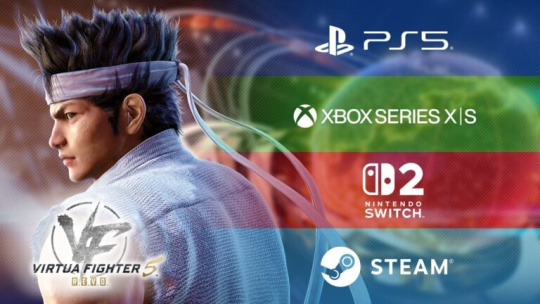
Publisher SEGA and developer Ryu Ga Gotoku Studio will release Virtua Fighter 5 R.E.V.O. for PlayStation 5, Xbox Series, and Switch 2, the companies announced. It will support cross-platform play and rollback netcode. A release date was not announced.
Virtua Fighter 5 R.E.V.O. first launched for PC via Steam on January 28.
“I know we’ve kept you waiting, our Steam release Virtua Fighter 5 R.E.V.O. is finally coming to PlayStation 5, Xbox Series X|S, and Nintendo Switch 2!” said legacy Virtua Fighter project producer Seiji Aoki during today’s Virtua Fighter Direct 2025 Spring. “Since Virtua Fighter 5 R.E.V.O.‘s launch, we’ve heard your requests for multiplatform support via the official Virtua Fighter Discord and other channels. We on the development team want to give users on all platforms the opportunity to enjoy Virtua Fighter 5 R.E.V.O., so we are happy to bring you this announcement.”
Aoki continued, “Also, in bringing this title to multiple platforms, we’re planning to include cross-play support. And to make your cross-play experience even smoother, the rollback functionality used in the Steam version will be supported on all platforms. We’re going to include even more content to make this much more than a simple port, which we’ll tell you about in future updates.”
Watch a new trailer below.
Consoles Announce Trailer
English
youtube
Japanese
youtube
#Virtua Fighter 5 R.E.V.O.#Virtua Fighter 5#Virtua Fighter#Sega#Ryu Ga Gotoku Studio#fighting game#Gematsu#Youtube
3 notes
·
View notes
Text
*bangs head on desk* Minecraft fishing/ocean update/mod concept again like what I did here but more in-depth (pun not intended) because I got up at like 3am and it's like 4 when I'm writing this title thing and I have nothing to do for several hours.
Anyone who makes "lol Mojang are too lazy to implement this stuff" comments will be thrown into The Machine™ for a week and forced to watch a video about the reality of multiplatform game development. Also like this is a pure hypothetical and more of a "what I would do if I still made Minecraft mods and could do something this ambitious.
The basics:
Cooked fish are now called Smoked [type of fish].
Some fish species can only be caught based on what biome you're in.
There are new aquatic mobs that can't be caught, but some can drop items that can be eaten. This includes Squid, which have a chance of dropping Squid Rings or a Raw Tentacle.
The ocean is now stratified, and also a lot deeper than it already is. It's separated into the Surface (basically just how Minecraft's oceans currently are, complete with more biome diversity), Abyss (much darker and filled with bioluminescent mobs, as well as only containing one biome), and the Darkest Depths (rarely generates and is extremely deep; contains a new boss and lots of hostile aquatic mobs).
Iron now rusts (over four stages, similar to Copper oxidising but a lot slower) if submerged for long periods of time; Rusted Iron is easier to break, but otherwise the same. Iron Golems can also rust, which makes them slower, weaker and less durable. Rust can be removed by using a Brush.
There is now a designated "ocean" village type, which uses wooden walkways (similar to how regular villages look when they generate on water), and has buildings made out of modified boats. The Villager textures look somewhat piratey, with eyepatches and stripey bandannas and stuff. There are also aquatic Illagers that use a more cetacean-like Ravager variety, live in towers that are connected to the seafloor by an underwater mountain. Also there's a new Illager variety, the Drillager (which wears a bulky diving suit with a giant drill attached, which it uses to break through blocks and to charge at its targets yes, this is a Bioshock reference).
Fishing has been slightly overhauled; while you still just stick your rod in the water and wait, there's now a Fishing Table that can be used to change what bait you're using, which increase the chances of finding rarer biome-restricted fish (more on that further down), as well as a "salvage hook" item that vastly decreases the chance of catching a fish, but increases the chance of finding treasure like Saddles, Name Tags and Nautilus Shells.
There are now Diving Helmets, which offer almost no protection (being a glass bubble-helmet) and require 8 Glass Panes to craft, but allow the wearer to stay underwater forever. If they're crafted with Stained Glass, then the player's view will be tinted the appropriate colour.
More in-depth stuff:
Sharks exist now; they're based specifically on the mostly-harmless Nurse Shark, and - being based on an endangered species - drop no items on death. They also attack small fish mobs.
Underground lakes now contain Cavefish (not based on any specific species), which are blind and swim away from (most) noises, effectively working like a sneaky "tutorial" for the Deep Dark's mechanics.
The Darkest Depths contain the ruins of an unknown civilisation, and are protected by the Ancient Guardian, based on the boss of the same name from Minecraft Dungeons (but without the shard in the top of its head). Also a variant of the Biomine spawns near Ocean Monuments.
Skeleton Sharks spawn in all ocean biomes at night; they're hostile, and move relatively fast. When on land, they don't drown, but being undead mobs they do eventually burn in sunlight. They can also spawn being ridden by baby Drowned.
There are three new types of Coral: Elegance, which is cyan and glows; Pillar, which is green and has Log/Pillar/Basalt-style rotation; and Maze, which is orange and can form Chorus Plant-like "trees" that are topped with blocks of other Coral varieties.
Biome-specific mobs (note that there would probably be more but these are just the ones I could come up with)
Icy biomes contain Seals (neutral to players, but hostile to fish; drop nothing on death have a unique baby design), Snailfish (basic ambient fish), and a new mob called the Iceshell (hostile; a creature resembling a giant Portugese Man O' War, with the "sail" being a giant chunk of ice, and the tendrils replaced by several dangling crustacean-like limbs).
Swamps contain Piranhas (hostile to any mob with 25% health or less remaining) and Electric Eels (electrify the water in a 3x3 area around them when attacked).
Beaches contain Giant Crabs (passive; can be tamed with Seagrass or raw fish, and ridden as a semiaquatic mount yes this is a Bionicle reference; their colours vary depending on the specific Beach subtype, with regular Beaches having red crabs, Stony Shores having blue, and Snowy Beaches having white).
Warm Oceans contain Frogfish (passive; come in eight colours that match up with the five vanilla Coral varieties and the new ones. They don't swim, instead walking on the seafloor; when standing on the Coral variety that corresponds with their texture, they turn invisible), Sea Slugs (passive; inflict Poison on contact) and Eels (neutral; spawn at night and attack smaller fish).
In the Nether, there are now Firefish (passive; instead of being cooked, the player has to right click on a water-filled cauldron while holding one in order to make it safe to eat), Basalt Floats (passive, but dangerous; function like floating platforms the player can stand on to get across lava, but can descend unexpectedly), and Magmateeth (hostile; giant lava-sharks that can set the player on fire just by biting them).
Abyss mobs include Anglerfish (passive), Octopi (neutral; much larger than Squid), Glowmouths (hostile; pale, shark-like creatures with no eyes and glowing mouths), Comb Jellies (passive; deal damage on contact) and Giant Isopods (passive; run away from the player).
There is probably more I could write but I have very few ideas.
13 notes
·
View notes
Text
Gears of War: Reloaded Comes to Xbox Series X|S, Xbox PC, Xbox Cloud Gaming, PlayStation 5 and Steam in Summer 2025

Summary
The original Gears of War returns, faithfully remastered and natively optimized for more platforms than ever before as Gears of War: Reloaded.
Gears of War: Reloaded launches August 26, 2025, for $39.99 SRP on Xbox Series X|S, Xbox PC, Xbox Cloud Gaming, PlayStation 5 and Steam, and arrives day one with Game Pass Ultimate or PC Game Pass.
Play on Xbox Series X|S, Xbox PC and Xbox Cloud Gaming with Xbox Play Anywhere.
Gears of War: Reloaded supports cross-play and cross-progression across all platforms.
Xbox fans who own the digital version of Gears of War: Ultimate Edition receive a free upgrade to Gears of War: Reloaded.
Wishlist now for Xbox Series X|S and Xbox PC, Steam, and PlayStation 5.
Gears of War: Reloaded is a celebration of one of gaming’s most iconic franchises. Featuring 4K resolution, 120 FPS support, and the ultimate multiplayer experience with cross-progression and cross-play, across all platforms, this is the definitive way to experience the game that started it all.
As we approach the 20th anniversary of Gears of War in 2026, we’re reflecting on what this franchise means. It’s about the stories we’ve told, the friendships we’ve built, and the unforgettable moments we’ve shared together. With Gears of War: Reloaded, we’re opening that door to more players than ever.

A Modern Classic Goes Multiplatform
Originally released in 2006, Gears of War: Reloaded brings the full experience forward once again — enhanced for the latest hardware across multiple platforms, introducing the Gears of War franchise to a new generation of players.
Developed by The Coalition in partnership with Sumo Interactive and Disbelief, Gears of War: Reloaded launches August 26, 2025, for $39.99 SRP on Xbox Series X|S, Xbox PC, Xbox Cloud Gaming, PlayStation 5, and Steam, and arrives on day one with Game Pass Ultimate or PC Game Pass. Play on Xbox Series X|S and Xbox PC with Xbox Play Anywhere.
Gears of War: Reloaded includes the full breadth of content from the Gears of War: Ultimate Edition, delivering the most complete version of the original game to date. Players will gain immediate access to all post-launch downloadable content at no additional cost — this includes the bonus Campaign act, all multiplayer maps and modes, and a full roster of classic characters and cosmetics unlockable through progression.

Built for Brotherhood
Gears of War: Reloaded is built for shared play — whether you’re teaming up in split-screen or jumping online. The Campaign supports two-player co-op, and Versus Multiplayer allows up to 8 players. With cross-play across all platforms, you and your friends can squad up no matter where you play — no Microsoft account required.
However, signing in with a Microsoft account unlocks full cross-platform functionality. It enables cross-progression, so your Campaign and multiplayer progress carries across devices. It also allows you to send invites and play with friends across platforms — like Xbox to PlayStation or Steam to Xbox.

Precision Performance on Every Platform
No matter where you play, Gears of War: Reloaded has been re-engineered to look and feel incredible. Players can expect:
4K resolution
60 FPS in Campaign
120 FPS in Multiplayer
High Dynamic Range (HDR)
Dolby Vision & 7.1.4 Dolby Atmos
7.1.4 3D Spatial Audio
Variable Refresh Rate (VRR)
4K assets and remastered textures
Enhanced post-processing visual effects
Improved shadows and reflections
Super resolution with improved anti-aliasing
Zero loading screens during Campaign
From faster frame rates to deeper visual fidelity, every detail has been tuned to bring the original game into the present with clarity, smoothness, and immersion that matches the power of today’s hardware.
And wherever you play, we’re meeting you there with the best version possible. Gears of War: Reloaded includes platform-specific features that make the most of the hardware you already own to deliver a world-class Gears of War experience — faithful to the original, optimized for today, and made for everyone.
For Xbox Fans, A Thank You
As a token of our gratitude to longtime fans, Gears of War: Reloaded will be a free upgrade for players who purchased the digital version of Gears of War: Ultimate Edition prior to today’s announcement. (Must have purchased a digital version of Gears of War: Ultimate Edition prior to 16:00 UTC on May 5, 2025. A code for Gears of War: Reloaded will be delivered prior to launch of the game via a direct message to eligible Xbox accounts.)
And for Game Pass Ultimate and PC Game Pass members, Gears of War: Reloaded will be available as part of the Game Pass library at launch.




#gears of war#gears of war reloaded#microsoft#xbox#playstation#playstation 5#ps5#pc#pc gaming#xbox series x#xbox series s#video games#gaming#gaming news#screenshots#news
2 notes
·
View notes
Note
As Square Enix changes it's strategy from focusing on one platform to aiming for multi-platform releases, I wonder- how much effort does it take to do multiplatform dev from the start versus porting to them later? And even then- how long DOES it take / cost to make to make a port from a comparative platform like say, PS5 to Xbox Series? Is there a way you can use your experience in the industry to guess an average, or is it completely different from game to game and you can't make any estimations without WAY more data? I guess I'm just curious why SquareEnix released 15 for all formats to greater sales than either XVI or VIIremakes, but still decided to go PS first, others way later down the line.
The good news is that the PS5 and the XSX aren't too far away from each other in terms of hardware power and architecture. Further, developing on XSX also mostly works out of the box with DirectX, which means it is easy to also get the game running on PC. It's relatively easy to build a game out of a generic system and task our engine programmers with getting that generic system working on each of our target platforms.

The difficulty in multiplatform development comes from trying to get the same generic system to run on drastically different hardware power profiles or architectural differences (commonly known as the Nintendo problem). If we have a game that assumes the player's hardware have at least 16GB of RAM and an 8-core 3.5GHz CPU and we suddenly have to fit that game into 4GB of RAM and a 1GHz 4-core CPU, we've got to make a lot of drastic changes in order to get the game running at all. I'm fond of saying that porting PS/Xbox games to Nintendo hardware is trying to get an entire Honda Accord to fit inside a Mini-Cooper.

The general rule when estimating the cost of making a change is how early during the process the change is made. The earlier in the process the change is made, the cheaper the cost of the change. Making a change to a movie before it's cast and shot is much easier and cheaper than making a change after the filming is complete. Making the decision for a project to go multiplatform from the jump means that the entire project will be built with maintaining multiplatform stability as a major goal. This means that further decisions will be made with that goal in mind - the team might spend those resources elsewhere instead of optimizing for certain platform-specific hardware features.

As for why Square-Enix decided to go platform exclusive with FF16 and the FF7 Remakes, it is likely that Sony offered them a seemingly-better deal. Most third party publishers get a standard deal with the platform - the platform takes a 30% cut of all of the game's revenue, the game must pass certification, the platform gets some kind of exclusive content for that version of the game, and so on. If the platform wants to get an exclusive, they offer a better deal than that - maybe Sony agrees to pay for some of the marketing of the game, maybe Sony takes a smaller cut of the revenue, maybe Sony waives the certification costs on the publisher's next five Playstation games, and so on and so forth. These concessions and incentives are certainly worth considering. Sometimes they work out well for the third party, like Insomniac's Spider-Man games. Sometimes they don't.
[Join us on Discord] and/or [Support us on Patreon]
Got a burning question you want answered?
Short questions: Ask a Game Dev on Twitter
Long questions: Ask a Game Dev on Tumblr
Frequent Questions: The FAQ
16 notes
·
View notes
Text
Well, the covers are off. This is what I've been working on for a while: full-stack development with stuff like AI assistance and live debugging, from inside your browser tab. We're accepting a limited number of signups with a gradually-increasing rollout over the next few months.
43 notes
·
View notes
Text
Two in One Post with Two Responses.
First Response to both my Filipino Friend and my A-Pal.
Well, I was kinda surprised to see Bayonetta be picked in Smash Bros. I have remembered Bayonetta a couple of times and listened to some of the soundtracks. I have played the first one which was published by Sega. I know the game used to be made by Sega, but then sure enough, they called around saying that Nintendo owns it. Platinum Games sure has a big connection to Nintendo with some of their titles including their own. A bit like the Atlus titles and Rovio's Angry Birds, people ask who owns them, because both of the companies got sold to Sega, and sure enough, we found out that Sega owns both Atlus and Rovio. Which I'm okay with, unlike how back in 2002 when Rare got sold to Microsoft, they haven't worked on some of their titles in so long. Especially when they made too much on Sea of Thieves and Kinect Sports games. And speaking of Sea of Thieves, I did hear that the game has been shown on all the different systems, not only on Xbox and Computer, I did hear they made it on PlayStation as well. Sounds confusing, unlike if Microsoft would Offer Rare to be a Multiplatform Development company. And back to the Smash Topic to my Filipino Friend, I understand you borrowed your Cousin's Wii back then, because it had Smash Bros. Brawl, which is really memorable. But if you haven't owned any Nintendo consoles, then there's these two Flash Games our A-Pal and I played which are called Super Smash Flash. He has played both 1 and 2, and I only remember playing the first one. The flash games were memorable during the Newgrounds days, even when they still had their popular titles we had today.
Second Response to my Filipino Friend.
I know having Pizza and Candy are like a different combination besides Pizza and Ice Cream, or this Saying when going skiing, Pizza and French Fry. It's like the saying I said with my mom when placing my video game console, there's a stand and a sandwich. Stand means you want to place something like a stand. And Sandwich means you're placing something flat on the table, like a sandwich. And my family and I always place our consoles like a Sandwich. And another topic, I would agree with you on thinking about the whole Candy topping on Pizza, because it would be kinda weird and disgusting. Much like the time when I was in high school, my BFF, every time he orders Pizza and has Chocolate milk as his drink, he dips his Pizza in chocolate which is kinda gross. Even some of my classmates dipped chips in chocolate milk which would taste disgusting. That's probably one of my most disgusting moments during my high school days. And that's why I usually place my food separately to make it an okay meal. Unlike when I usually use some of my fast food mobile apps on my cellphone.
5 notes
·
View notes
Text
Top Frameworks for Hybrid Mobile Application Development Services in 2025

In today’s fast-paced digital landscape, businesses seek innovative ways to build mobile applications that work seamlessly across multiple platforms. Hybrid mobile application development services have gained immense popularity due to their cost-effectiveness, faster development cycles, and ability to reach a wider audience. By leveraging hybrid frameworks, businesses can streamline app development while maintaining a native-like user experience.
As we step into 2025, several powerful frameworks have emerged as top choices for cross-platform app development services. These frameworks enable businesses to build high-performance apps that function smoothly on both Android and iOS devices. Let’s explore the best frameworks leading the multiplatform mobile app development industry this year.
1. Flutter – Google’s Powerhouse
Flutter, developed by Google, remains one of the most popular hybrid app development frameworks. Its key advantages include:
✅ Single Codebase: Developers can write code once and deploy it across multiple platforms. ✅ Rich UI Components: Flutter offers a vast collection of widgets that enable dynamic and visually appealing applications. ✅ Fast Performance: The Dart programming language ensures high-speed execution, making apps feel as smooth as native ones.
With a growing community and extensive documentation, Flutter is a preferred choice for businesses investing in hybrid mobile application development services.
2. React Native – Facebook’s Innovation
React Native, backed by Meta (formerly Facebook), has been a game-changer in hybrid mobile development. It offers:
✅ Reusable Components: Developers can reuse UI elements, reducing development time. ✅ Strong Community Support: A vast developer community ensures regular updates and improvements. ✅ Seamless Integration: It allows easy integration with third-party plugins and native modules.
React Native continues to be a powerful option for cross-platform app development services, offering a blend of performance and flexibility.
3. Ionic – The Classic Choice
Ionic is a framework that has consistently been favored for multiplatform mobile app development. It features:
✅ Web Technology Stack: Built with HTML, CSS, and JavaScript, making it accessible for web developers. ✅ Cross-Platform Compatibility: Apps work seamlessly across Android, iOS, and even web applications. ✅ Large Plugin Library: A vast range of pre-built plugins simplifies app enhancement.
With its ease of use and adaptability, Ionic remains a great option for businesses looking to develop high-quality hybrid applications.
4. Xamarin – Microsoft’s Enterprise Solution
Xamarin, powered by Microsoft, is an excellent choice for enterprise-level hybrid app development. Its key benefits include:
✅ C# and .NET Integration: Ideal for businesses already using Microsoft technologies. ✅ High-Performance Apps: Ensures near-native performance and efficient memory usage. ✅ Native API Access: Provides access to device-specific features and hardware functionalities.
For companies seeking a robust, scalable, and enterprise-friendly framework, Xamarin is a strong contender in hybrid mobile application development services.
Conclusion
Hybrid app development continues to evolve, offering businesses innovative solutions to create efficient and engaging mobile applications. Whether you choose Flutter for its UI excellence, React Native for its flexibility, Ionic for its web-based approach, or Xamarin for enterprise-grade applications, selecting the right framework depends on your business needs.
By leveraging cross-platform app development services, businesses can ensure seamless performance and a broader reach. With advancements in multiplatform mobile app development, 2025 promises more efficient, scalable, and user-friendly hybrid applications.
#Hybrid Mobile Application Development Services#cross platform app development services#multiplatform mobile app development
0 notes
Text
PMT01: Scaffold nano & Trowel pico
Scaffold nano & Trowel pico v1.1.0 have been released tonight.
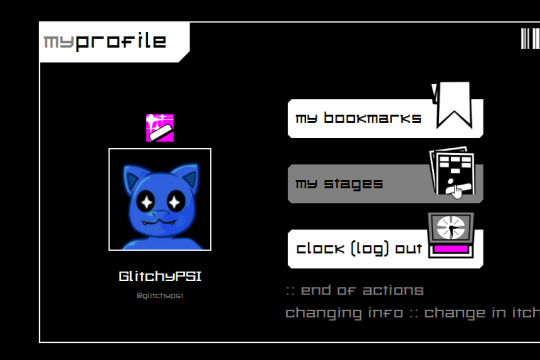
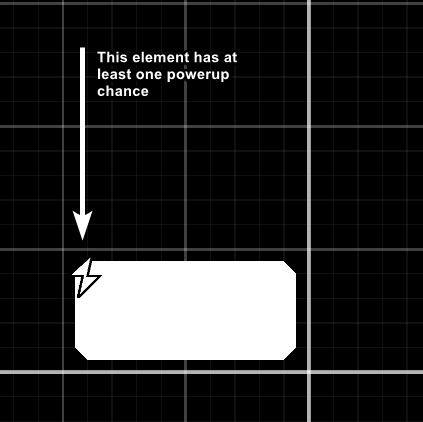
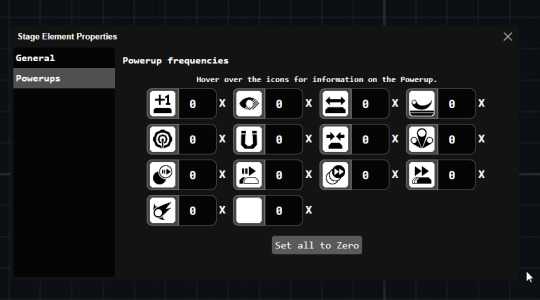
Updates add a myStages to Scaffold, and QoL improvements to the powerup editing experience in Trowel pico.
Now that it's out, I'd like to also take this moment to talk about the development and release of both.
One year minus one day ago I had announced in Twitter I would work on the level editor for the demo version of BRICKBREAKER SPRINT (nano) so fans could breathe in more life to the game even in its limited state and to also showcase how much it can do with its limited toolset at the current time.
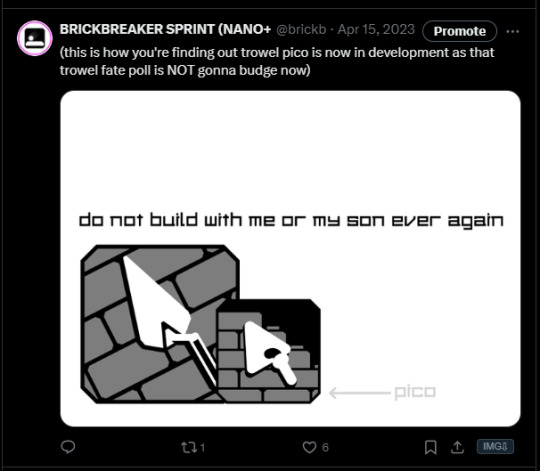
The reasoning for a completely separate technology version was simple, WebGL. WebGL in Unity is so limited for even the most basic things (I had to install a package to support cross-app copy/paste before nano+'s release!) and I said "hey, might as well give the multiplatform users something to be able to edit with, doesn't need to be just windows which is what the currently unpolished-ish trowel desktop is!"
But then it hit me that the same limitations would likely make it hell for me to support just levels downloaded as files (internally stored with "bxtp" extension btw :) ) so then... I came at a crossroads
just say FKIT and not do it, make ppl wait for BB Lite
still say FKIT and kickstart the foundation of the online service that I had planned since the first design iteration of the game
guess what I took?
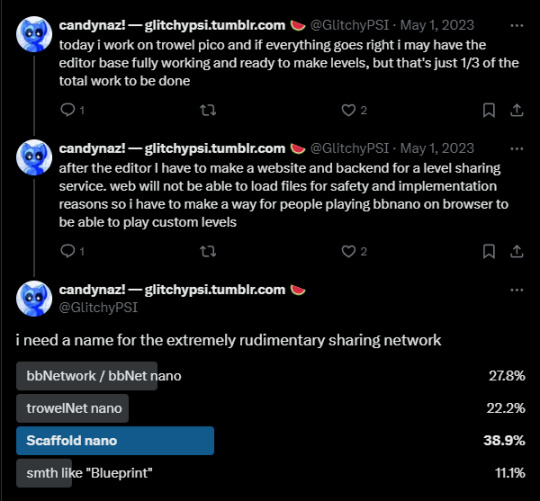
I don't regret it.
Currently, Scaffold's login system is attached to itch.io. In the future, this will use my own account system (called Luna, still in development)
Now then... developing Scaffold's frontend was a challenge in itself, because I'm a masochist. I chose yet another technology to make the frontend in, this time Svelte, Sveltekit as backend saying "okay, no more fear of ServerSideRendering now that I can afford a VPS for this"
but... Svelte has been an absolute joy to work with. Its learning curve even smoother than React's (my first frontend framework, which powers cometSpectrum!), and I got everything rolling very quickly
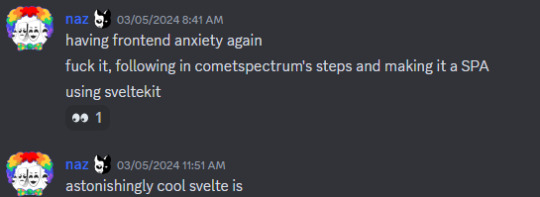
At first, I was going to use my regular website design language, but it's kinda jank, so I said NO and started from scratch with a simpler façade. For the style I wanted to pursue... it was perfect. Some people have complimented the graphic aspect of the site, and I'm happy I could deliver exactly what I wanted. (and yes the icons being in opposite directions compared to bbsprint's UI is entirely on purpose)
BTW, the site is made in such a way that a BB theme could be used as the site's theme and every color will change except for PNG icons, i love it (this functionality is used for people using their OS's Light theme)
This is actually the first made-by-me website project that has "public" facing write actions to a database and stores actual files. It works... very well, and I am very happy about it. It's like a combination of everything I've learnt up to this point, down to API design and interop between programs.
I did say this was the foundation for Scaffold, and I plan for this game to keep Scaffold as its prime way of getting stages, even when getting to storefronts like Steam or GOG. Kind of like an osu! situation.
You're at this part of the message... wanna see how Scaffold's logo used to look like?
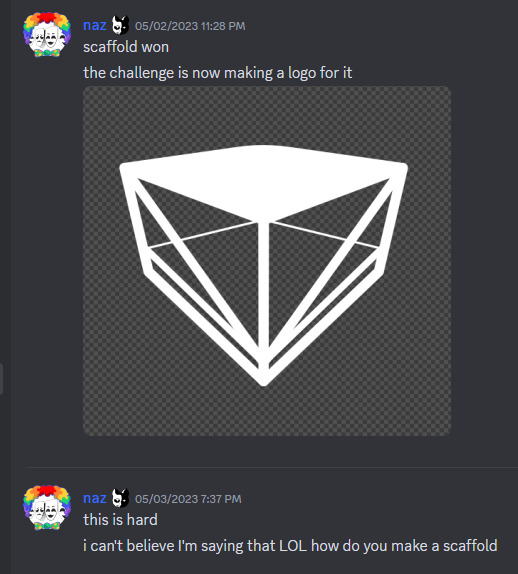
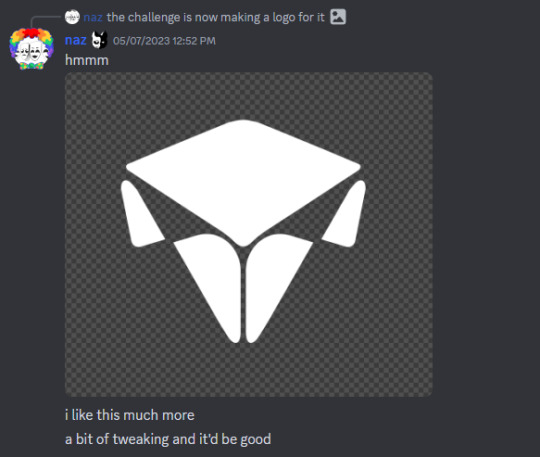
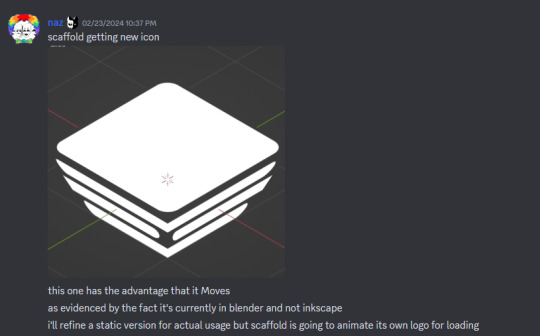
5 notes
·
View notes